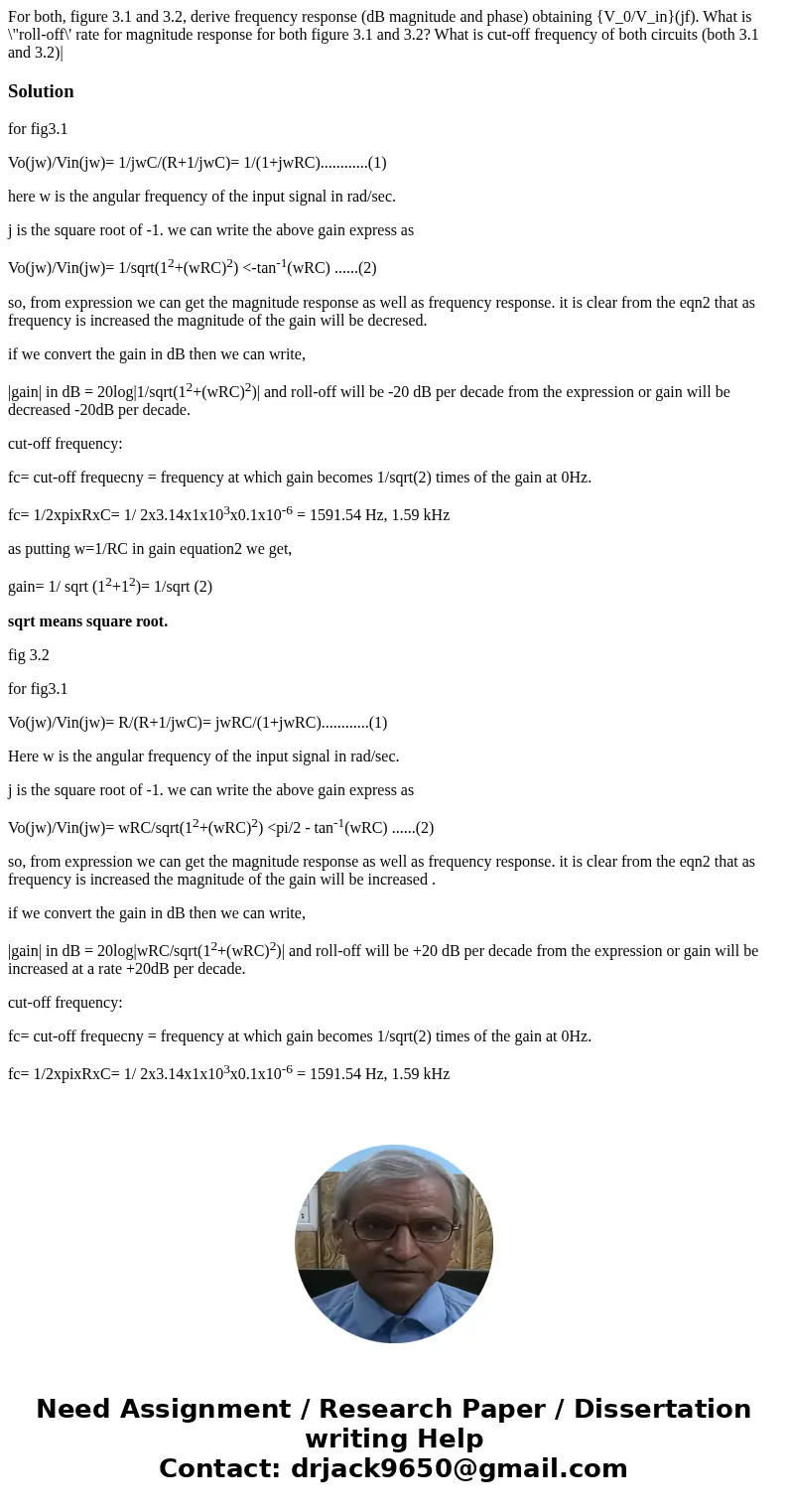For both figure 31 and 32 derive frequency response dB magni
Solution
for fig3.1
Vo(jw)/Vin(jw)= 1/jwC/(R+1/jwC)= 1/(1+jwRC)............(1)
here w is the angular frequency of the input signal in rad/sec.
j is the square root of -1. we can write the above gain express as
Vo(jw)/Vin(jw)= 1/sqrt(12+(wRC)2) <-tan-1(wRC) ......(2)
so, from expression we can get the magnitude response as well as frequency response. it is clear from the eqn2 that as frequency is increased the magnitude of the gain will be decresed.
if we convert the gain in dB then we can write,
|gain| in dB = 20log|1/sqrt(12+(wRC)2)| and roll-off will be -20 dB per decade from the expression or gain will be decreased -20dB per decade.
cut-off frequency:
fc= cut-off frequecny = frequency at which gain becomes 1/sqrt(2) times of the gain at 0Hz.
fc= 1/2xpixRxC= 1/ 2x3.14x1x103x0.1x10-6 = 1591.54 Hz, 1.59 kHz
as putting w=1/RC in gain equation2 we get,
gain= 1/ sqrt (12+12)= 1/sqrt (2)
sqrt means square root.
fig 3.2
for fig3.1
Vo(jw)/Vin(jw)= R/(R+1/jwC)= jwRC/(1+jwRC)............(1)
Here w is the angular frequency of the input signal in rad/sec.
j is the square root of -1. we can write the above gain express as
Vo(jw)/Vin(jw)= wRC/sqrt(12+(wRC)2) <pi/2 - tan-1(wRC) ......(2)
so, from expression we can get the magnitude response as well as frequency response. it is clear from the eqn2 that as frequency is increased the magnitude of the gain will be increased .
if we convert the gain in dB then we can write,
|gain| in dB = 20log|wRC/sqrt(12+(wRC)2)| and roll-off will be +20 dB per decade from the expression or gain will be increased at a rate +20dB per decade.
cut-off frequency:
fc= cut-off frequecny = frequency at which gain becomes 1/sqrt(2) times of the gain at 0Hz.
fc= 1/2xpixRxC= 1/ 2x3.14x1x103x0.1x10-6 = 1591.54 Hz, 1.59 kHz

 Homework Sourse
Homework Sourse